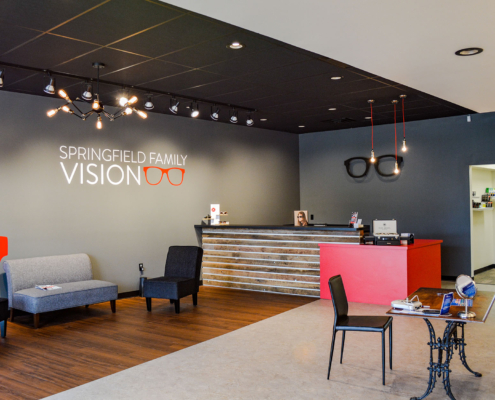 https://www.tdp-arch.com/wp-content/uploads/2023/11/CoxHealth-The-Center-for-Plastic-Surgery-0180.jpg
1250
2000
Abstrakt Marketing
/wp-content/uploads/2024/09/Torgerson-Design-Partners-Logo.png
Abstrakt Marketing2025-01-16 11:04:512025-01-24 10:46:45Key Principles of Patient-Centered Healthcare Architecture
https://www.tdp-arch.com/wp-content/uploads/2023/11/CoxHealth-The-Center-for-Plastic-Surgery-0180.jpg
1250
2000
Abstrakt Marketing
/wp-content/uploads/2024/09/Torgerson-Design-Partners-Logo.png
Abstrakt Marketing2025-01-16 11:04:512025-01-24 10:46:45Key Principles of Patient-Centered Healthcare ArchitectureAcoustic Control: Managing Sound in Commercial Spaces Through Architecture and Design
The way that sound behaves within a space significantly impacts the comfort, functionality, and overall experience of its occupants. Effective acoustic control can transform a noisy, distracting environment into a serene, productive space. In this blog, we’ll explore the principles of acoustics and architecture, the consequences of poor acoustic design, and how architecture and interior design can address acoustic challenges in various settings.
What Are Acoustics and Acoustic Control?
Acoustics refers to the science of sound, including its production, transmission, and effects. In architecture and interior design, acoustics involves managing how sound travels within a space. Acoustic control typically includes strategies and solutions used to influence sound behavior, such as absorbing, diffusing, and blocking sound waves.
Good acoustics contribute to a space’s overall design and feel by enhancing speech intelligibility, reducing noise pollution, and creating a comfortable auditory environment. By integrating acoustic control into the design process, spaces can be tailored to their specific functional needs, whether that be clear communication, privacy, or ambiance.
The Role of Architecture and Interior Design in Acoustic Control
Architectural and interior design plays a pivotal role in managing acoustics. Thoughtful design can address acoustic challenges specific to various industries and applications.
Churches and Religious Institutions
Clear and intelligible sounds are essential for the worship experience in places of worship, allowing congregants to fully engage in religious services. Poor acoustics can result in echoing and dissonant noise, making it difficult to hear and understand spoken words or music.
To overcome these auditory challenges, you might:
- Incorporate high ceilings to reduce direct sound reflections
- Install acoustic panels and diffusers to manage soundwaves
- Select materials that control reverberation times
For example, installing sound-absorbing panels behind the altar and along the walls can significantly reduce echoes and enhance vocal clarity, creating a more reverent and immersive experience for worshippers.
Educational Facilities
Acoustic control in educational facilities can significantly impact students’ ability to learn. Poor acoustics can lead to increased noise levels, making it hard for students to concentrate and participate in class activities. Classrooms, lecture halls, and libraries can all benefit from designs that minimize external noise and manage internal sound reflections. Acoustic panels, ceiling tiles, and floor coverings are commonly used to absorb sound, reducing distractions and enhancing speech intelligibility.
For instance, sound-absorbing materials on walls and ceilings can prevent noise from adjacent rooms and hallways, creating a more serene, distraction-free learning environment.
Hospitality
In the hospitality industry, acoustics directly affect guest comfort and satisfaction. Hotels and restaurants must balance privacy and ambiance to create an inviting atmosphere for guests. Good acoustics enhance the overall guest experience by providing a peaceful environment free from disruptive noise, which is crucial for rest and relaxation in hotel rooms and enjoyable dining in restaurants.
Poor acoustics can lead to complaints about noise, negatively impacting guest satisfaction and tarnishing a business’s reputation. Effective acoustic control in hospitality settings involves strategically using soundproofing, soft furnishings, and acoustic partitions to manage noise levels. These elements help to maintain a pleasant guest experience by ensuring that unwanted sounds are minimized and the desired ambiance is preserved. By integrating these acoustic solutions, hospitality venues can create a more comfortable and appealing environment, fostering positive guest experiences and encouraging repeat visits.
Retail
Good acoustics are essential for creating a pleasant shopping atmosphere in retail environments. Materials that absorb and diffuse sound—like carpeting, ceiling tiles, or upholstered furniture—can significantly reduce background noise and make the shopping experience more enjoyable. This encourages customers to spend more time in the store, enhancing their overall experience and increasing the likelihood of purchases.
Poor acoustic control, on the other hand, can result in a noisy, stressful environment that deters customers and reduces their time spent shopping.
Entertainment Venues
In entertainment venues such as theaters, concert halls, and cinemas, high-quality acoustics are essential for delivering a memorable experience. Poor acoustics can lead to dissatisfaction and negatively impact the overall performance or event. This involves careful planning of the room’s shape, the placement of sound-reflecting and absorbing materials, and advanced acoustic treatments to manage sound distribution and reverberation. For example, concert halls use a combination of diffusers, reflectors, and absorptive materials to ensure that music is delivered with clarity and richness to every seat in the house, creating an exceptional auditory experience.
At TDP, we leverage our diverse industry experience to provide tailored auditory design solutions for educational facilities.
The Impact of Poor Acoustic Control and Design
The absence of proper acoustic control can lead to several issues in commercial settings, including:
Noise Pollution
Excessive noise from external sources or internal activities can create a disruptive environment, reducing productivity and comfort. For instance, the constant hum of conversations, phone calls, and office equipment can lead to a stressful and unproductive atmosphere in open-plan offices. Employees might struggle to concentrate, leading to decreased efficiency and increased frustration.
Lack of Privacy
Poor acoustics can make conversations easily overheard, compromising confidentiality and personal comfort. This is particularly problematic in medical offices, legal firms, and open workspaces where sensitive information is often discussed. Private conversations can become public without proper acoustic control, eroding trust and comfort.
Poor Sound Quality
In spaces where sound clarity is crucial, such as auditoriums and meeting rooms, inadequate acoustic design can lead to muffled or distorted audio. This can hamper communication during important meetings or presentations, leading to misunderstandings and a lack of engagement from the audience.
Stress and Fatigue
Persistent noise and poor sound quality can contribute to stress and fatigue, negatively impacting the well-being of occupants. In healthcare settings, for instance, constant noise can affect patient recovery and staff efficiency. A well-designed acoustic environment can mitigate these issues, promoting a healthier, more pleasant atmosphere.
How Working With an Experienced Architecture and Design Firm Can Help You Establish Acoustic Control
Collaborating with an experienced architecture and design firm well-versed in acoustic design and control can significantly enhance a space’s functionality and comfort. These professionals have the expertise to assess acoustic challenges and implement tailored solutions that meet the specific needs of different environments.
Expert Acoustic Assessments
An experienced firm can conduct thorough acoustic assessments to identify potential issues and areas for improvement. This involves evaluating the existing acoustic environment and understanding the space’s specific requirements. Through detailed analysis and measurement, they can pinpoint problem areas and develop a comprehensive plan to address them.
Tailored Acoustic Solutions
Based on the assessment, the firm can develop customized solutions to address acoustic challenges. This might include recommending specific materials, designing architectural features, and integrating advanced acoustic technologies to optimize sound quality.
Design Integration
Acoustic control should not be an afterthought but an integral part of the design process. An experienced firm ensures that acoustic solutions are seamlessly integrated into the overall design, maintaining aesthetic appeal while achieving the desired acoustic performance. This holistic approach ensures that the space is both visually and acoustically pleasing, capable of enhancing the overall user experience.
Improve Acoustic Control With Torgerson Design Partners
At Torgerson Design Partners, we’re committed to delivering exceptional acoustic solutions that enhance the quality and functionality of your commercial space. Our in-house team leverages years of architectural and interior design experience to create environments that meet both your auditory and aesthetic needs. Reach out to our team today to learn about how we can help you create a space that sounds as good as it looks.









